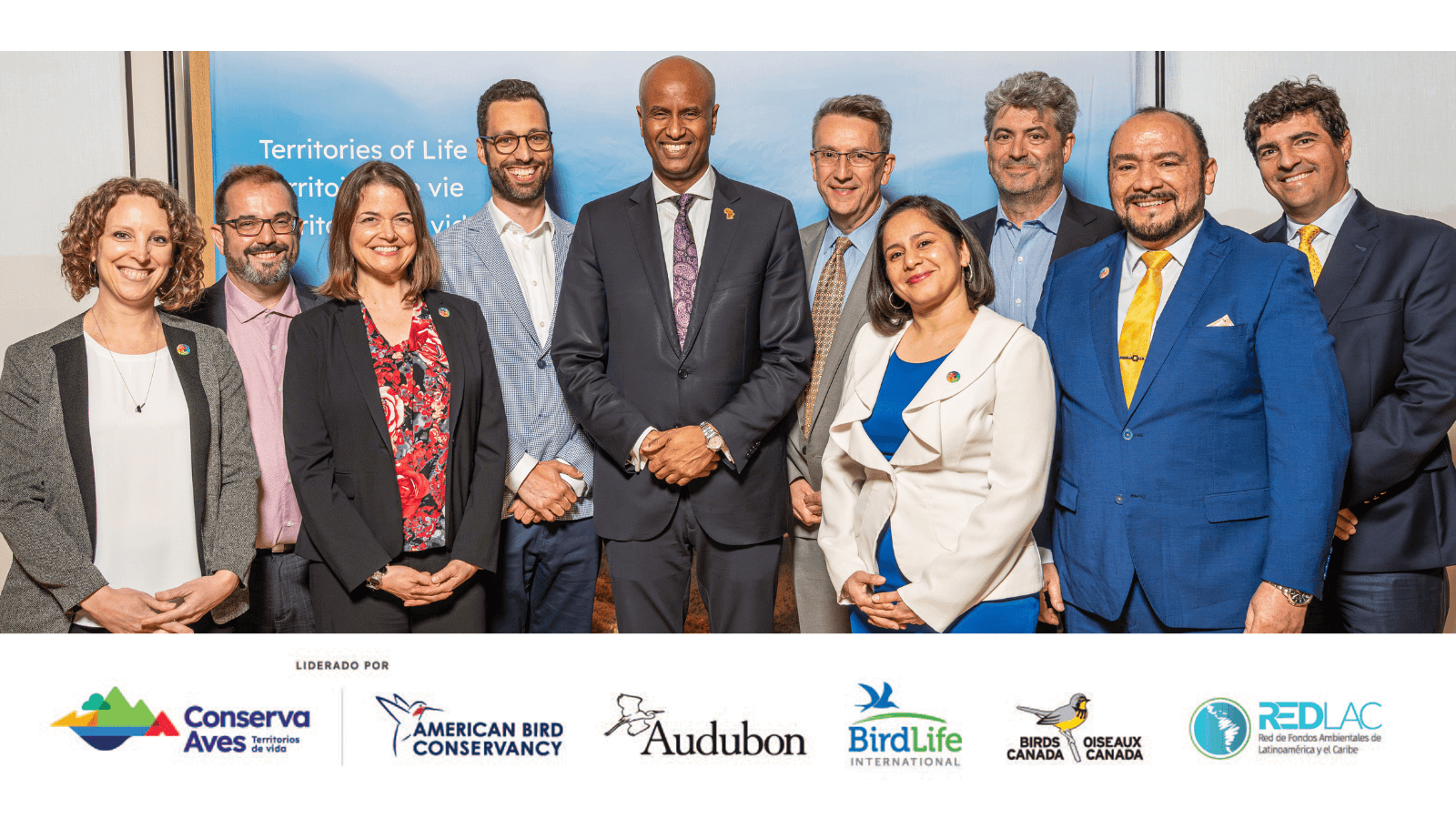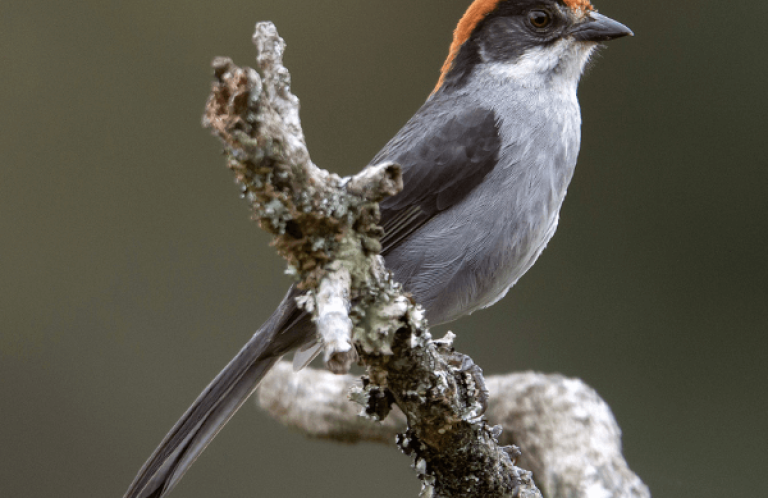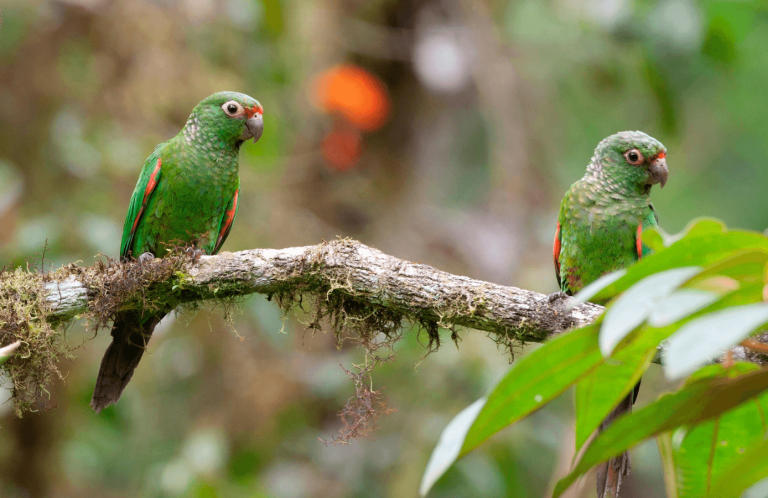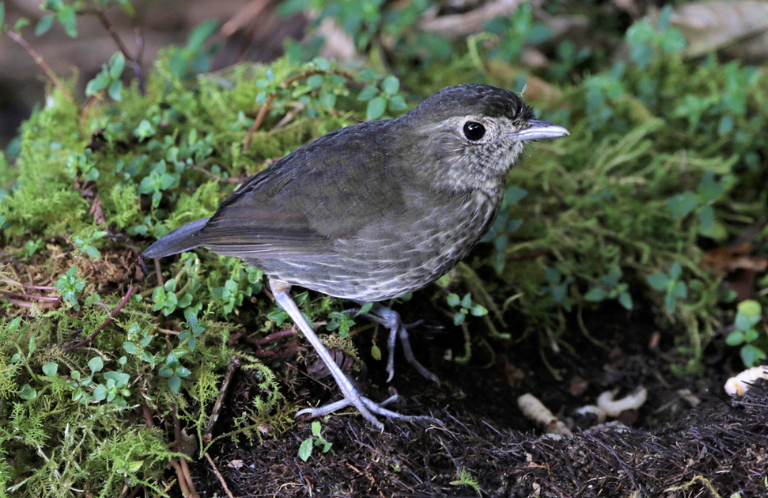Birds Canada Joins the Conserva Aves Initiative to Support Local Protected Areas in Latin America and the Caribbean

On May 22, the International Day for Biological Diversity, the Honorable Ahmed Hussen, Minister of International Development, announced an investment of $15 million over 3 years to Birds Canada to support the health of biodiversity and ecosystems in Latin America and the Caribbean through the Conserva Aves Initiative. This contribution will protect migratory birds and their habitats and help achieve the objectives of the Kunming-Montreal Global Biodiversity Framework. Specifically, the investment will enable working with partners to support locally-led and gender-equitable conservation in Latin America and the Caribbean to create 100 new protected areas totaling at least 4.9 million acres (2 million hectares).
Thanks to this investment, Birds Canada becomes the newest partner in Conserva Aves — a bird and biodiversity conservation partnership created in 2021 — joining American Bird Conservancy (ABC), National Audubon Society, BirdLife International, and the Latin American and Caribbean Network of Environmental Funds (RedLAC).
The health of migratory bird populations is a key shared indicator of biodiversity. Three billion birds have been lost in North America since 1970, most of which spend over half the year in Latin America and the Caribbean. Conserva Aves is an important answer to this challenge as an inclusive conservation and climate change mitigation strategy benefiting birds, biodiversity, and present and future generations.
Birds know no boundaries and connect us all in the shared responsibility to halt and reverse biodiversity loss. Birds Canada brings to the initiative decades of knowledge in migration ecology, citizen science monitoring, and collaboration with Indigenous Peoples, along with projects in the Americas, such as the Motus Wildlife Tracking System. Through Conserva Aves, the organization will work with partners to support locally-led and gender-equitable change, particularly women, Indigenous Peoples, and Afro-descendant Peoples to achieve inclusive nature conservation.
Birds Canada joins Conserva Aves at a relevant moment when the initiative is expanding its wings from the Neotropical Andes initial phase to Mexico, Central America, and the Caribbean. These regions are home to some of the highest biodiversity anywhere on Earth and provide homes for many migratory birds in the nonbreeding season.
Altogether, Conserva Aves has seen exciting success to date. Currently working in eight countries, with four of them already totaling 2,862,962.95 acres (1,158,600 hectares) in protected areas in the process of being formally declared. The initiative is also advancing preliminary conversations with partner organizations in Guatemala, Belize, and Caribbean countries to reach the goal of 2 million hectares of subnational protected areas in Latin America and the Caribbean by 2028.
Flying together takes us further, as we have already seen in these two years of implementing Conserva Aves. Conservation is connection: connecting knowledge, territories of life, resources, communities, and local and national authorities while being respectful of skills and experiences in the places where we work.
We know that effective conservation is only possible with a hemispheric connection, from the boreal forests of the north to the Patagonia region in the south, from the Andes to the Caribbean, and throughout Central America and Mexico. We cannot do this work alone. Only through international partnerships can we achieve full annual life cycle conservation of our shared birds and hemispheric biodiversity.
Additional quotes
Michael J. Parr, President of ABC
“American Bird Conservancy looks forward to working with Birds Canada to advance conservation for migratory and resident birds while also empowering and improving the livelihoods of Indigenous Peoples and local communities. Their involvement will further strengthen Conserva Aves' work with ABC's partners throughout Latin American BirdScapes, places where smart land use leads to successful bird conservation. Together, we will promote and invest in best management practices that benefit birds, nature, and people.”
Patrick Nadeau, Birds Canada, President and CEO
“Birds Canada is thrilled to be joining the Conserva Aves initiative thanks to a significant investment by the Government of Canada. Throughout the hemisphere, birds unite us. Creating protected areas in Latin America and the Caribbean will not only help those countries halt and reverse biodiversity loss – it will help Canada do the same, by protecting essential overwintering habitat for dozens of migratory bird species. By working together, we will support meaningful conservation action and gender equity that benefits birds, biodiversity, and local communities.”
Martin Harper, BirdLife International CEO
“We are the power of many. Our partner, Birds Canada, has supported caretakers, Indigenous communities, and local communities as stewards of protected areas through citizen science, improved access to information such as Important Bird Areas and Key Biodiversity Areas, and bird monitoring. Through their leadership and commitment, Birds Canada has been advocating for the inclusion of critical bird sites in land use planning processes and as candidates for increased protection. This resonates with the nature and identity of our Conserva Aves initiative. We seek to support the creation, effective management, recognition, and sustainability of community-led subnational protected areas grounded in traditional knowledge and safeguards. Integrating Birds Canada's expertise into Conserva Aves will bolster the efficacy of our overall approach, particularly in terms of facilitating access to information and decision-making tools.”
Elizabeth Gray, National Audubon Society CEO
“A hemispheric approach to bird conservation is one of the key drivers in Audubon's ongoing work to bend the bird curve, and Conserva Aves is a powerful example of that. In less than two years, the initiative has seen significant results made possible by working with communities, local and national partners, and international allies to pool resources around a common goal. What began as a daring idea and ambitious model, is now an innovative and growing alliance where new partners like Birds Canada can find the energy, knowledge, people, and resources to bend the bird curve in favor of biodiversity and the endemic and migratory birds that these territories share. We celebrate the arrival of this new member to Conserva Aves.”
RedLAC
"The arrival of Birds Canada reinforces Conserva Aves' commitment to working with local communities and ethnic groups, promoting participation and respecting their worldview to strengthen empowerment and inclusion in the region."
###
American Bird Conservancy (ABC) takes bold action to conserve wild birds and their habitats throughout the Americas. Inspired by the wonder of birds, we achieve lasting results for the bird species most in need while also benefiting human communities, biodiversity, and the planet's fragile climate. Our every action is underpinned by science, strengthened by partnerships, and rooted in the belief that diverse perspectives yield stronger results. Founded as a nonprofit organization in 1994, ABC remains committed to safeguarding birds for generations to come. Join us! Together, we can do more to ensure birds thrive.
Media Contact
Jordan Rutter
Director of Communications
media@abcbirds.org


















































